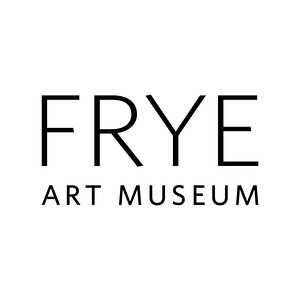September 15, 2018–January 6, 2019
704 Terry Avenue
Seattle, Washington 98104
USA
Hours: Wednesday–Sunday 11am–5pm
info@fryemuseum.org
Centering on interactive projects and immersive installations, Group Therapy convenes works by twelve contemporary artists in a range of media that comment on and/or adapt strategies of alternative medicine, psychotherapy, and the wellness industry. The exhibition will serve as a platform for public programs led by artist-practitioners, transforming the Museum into a unique kind of free “clinic” in which visitors may engage in therapeutic processes in the experimental context afforded by art. By doing so, the exhibition both analyzes and participates in a broader zeitgeist of popularized psychology, self-care, and natural healing—marked by an explosion of interest in everything from personality type tests, meditation retreats, spa treatments, and juice cleanses, to crystals, astrology, and psychedelic vison questing—that has evolved out of and in response to a neoliberal ethos centered on self-optimization.
The exhibition begins with works that diagnose social pathologies such as racism, sexism, and political tribalism that affect individual health and in turn fuel the ongoing growth of the wellness and self-help industries. This includes Liz Magic Laser’s padded-room video environment, Primal Speech, in which Primal Therapy techniques are applied to purge political frustrations. Large-scale collages by Kandis Williams demonstrate how particular conceptions of identity, race, and gender—particularly the image of the “unstable” woman—are continually reinforced, while sculptures from Maryam Jafri’s Wellness-Postindustrial Complex series depict the contemporary individual as a fragmented “body of parts” seeking reintegration through popularized Eastern healing practices. An installation of sculpture and videos by Shana Moulton, including Whispering Pines 10: Phase I, follows the artist’s alter-ego ‘Cynthia’ through her compulsive consumption of trendy wellness products in her ceaseless effort to achieve self-fulfillment.
Leigh Ledare’s film The Task will screen regularly in the Museum’s auditorium. The video records a three-day conference involving 30 participants and 10 psychologists in group psychology sessions based on the Tavistock method with one key, complicating modification: the artist and camera crew’s presence as witnesses and participants.
The exhibition continues with projects that focus on identification with archetypal characters and symbolic self-narration, taking the visitor from observer to participant in voluntary “treatments” based on psychoanalysis and divination. Visitors are invited to lounge together in Wynne Greenwood’s installation How we, I mean how I pray, which takes the form of a women’s spa with video projections featuring Medusa and Pebbles Flintstone in place of soaking pools on the floor. Trained facilitators will offer activations of Pedro Reyes’s The Museum of Hypothetical Lifetimes, a work from the artist’s Sanitorium project that allows participants to create the “exhibition” of their life by selecting from hundreds of objects. Fortune teller and artist Cindy Mochizuki will offer tarot and palm readings in exchange for participants’ “monster” stories, which Mochizuki will translate into inkblot drawings that accumulate in the gallery over the course of the exhibition.
The exhibition’s final passage engages visitors in sensory experiences and visualizations that plug into ancient forms of knowledge and deeper, interconnected consciousness. Film works by Joachim Koester explore the “terra incognita” of the body and potential routes of access to underlayers of the human mind. Artist and acupuncturist Ann Leda Shapiro’s healing scrolls and depictions of the microcosmic body surround Lauryn Youden’s meditative installation A place to retreat when I am sick (of you), which centers on a ceremonial circle of combed black sand, a mesmerizing rotary sculpture, and crystal bowls sound bath. Concluding the show is Marcos Lutyens’s installation Library of Babel, a Symbiont Induction, based on his study of mycelial (fungal) colonies as models of mutuality, comprising a spiral staircase of fruiting mushrooms and hypnotic audio track.
The exhibition is accompanied by a diverse program of events including in-gallery activations, artist talks, workshops, and more.
Group Therapy is organized by the Frye Art Museum and curated by Amanda Donnan. Generous support is provided by ArtsFund, the Frye Foundation, the Hugh and Jane Ferguson Foundation, and Frye Art Museum members. Media sponsorship is provided by City Arts.
Press contact
T + 1 206 432 8214 / press [at] fryemuseum.org



